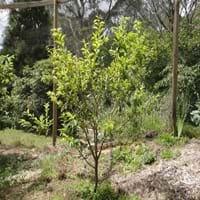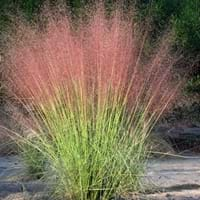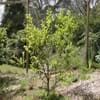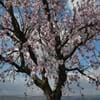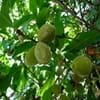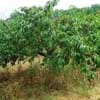Life Span
Biennial
Perennial
Origin
Hybrid origin
Northeastern United States, Southeastern United States, Central United States, South-Central United States, Mexico, Caribbean
Types
Flavorosa, Amigo, Eagle Egg
Lindheimer's muhly
Number of Varieties
Not Available
Habitat
Wet lands
Prairies, Roadsides, Warmer regions
USDA Hardiness Zone
6-9
4-10
AHS Heat Zone
10-1
12 - 3
Sunset Zone
2a, 2b, 3a, 3b, 4, 5, 6, 7, 8, 9, 10, 11, 12, 14, 15, 16, 17, 18, 19, 20
4, 5, 6, 7, 8, 9, 10, 11, 12, 13, 14, 15, 16, 17, 18, 19, 20, 21, 22, 23, 24
Habit
Upright/Erect
Clump-Forming
Flower Color
Not Available
Pink
Flower Color Modifier
Bicolor
Bicolor
Fruit Color
Green, Orange Red, Red, Yellow green
Non Fruiting Plant
Leaf Color in Spring
Several shades of Green
Green, Dark Green
Leaf Color in Summer
Not Available
Light Green
Leaf Color in Fall
Not Available
Green, Dark Green, Brown
Leaf Color in Winter
Light Green
Tan, Brown
Leaf Shape
Palmately Lobed
Grass like
Plant Season
Winter
Spring, Summer, Fall, Winter
Sunlight
Full Sun
Full Sun, Partial Sun
Growth Rate
Medium
Medium
Type of Soil
Clay, Loam, Sand
Clay, Loam, Sand
The pH of Soil
Acidic, Neutral, Alkaline
Acidic, Neutral, Alkaline
Soil Drainage
Well drained
Well drained
Bloom Time
Spring
Late Summer, Early Fall, Fall
Where to Plant?
Ground
Ground
How to Plant?
Transplanting
Divison, Seedlings
Plant Maintenance
Medium
Low
Watering Requirements
Average Water Needs, Medium, Requires watering in the growing season, Water daily during growing season, Water Deeply
Water frequently while growing, Water more frequently during periods of extreme drought
In Summer
Lots of watering
Lots of watering
In Spring
Moderate
Moderate
In Winter
Average Water
Average Water
Soil pH
Acidic, Neutral, Alkaline
Acidic, Neutral, Alkaline
Soil Type
Clay, Loam, Sand
Clay, Loam, Sand
Soil Drainage Capacity
Well drained
Well drained
Sun Exposure
Full Sun, Partial Sun
Full Sun, Partial Sun
Pruning
Remove damaged leaves, Remove dead branches, Remove dead leaves
Prune when plant is dormant, Remove dead or diseased plant parts
Fertilizers
All-Purpose Liquid Fertilizer, Apply 10-10-10 amount
No fertilizers needed
Pests and Diseases
Red blotch
Aphids, Ladybug
Plant Tolerance
Drought
Drought
Flower Petal Number
Not Available
Single
Foliage Texture
Not Available
Fine
Foliage Sheen
Not Available
Matte
Attracts
Bees, Butterflies
Ladybug beetles
Allergy
Itchiness, Rash, Swelling
Not Available
Aesthetic Uses
Not Used For Aesthetic Purpose
Showy Purposes
Beauty Benefits
Not Available
Not Available
Edible Uses
Insignificant
No
Environmental Uses
Air purification
Air purification, Shelter for wildlife
Medicinal Uses
Immunity
No Medicinal Use
Part of Plant Used
Fruits
Whole plant
Other Uses
Jam, Jelly, Used As Food, Used in salads
Used as Ornamental plant
Used As Indoor Plant
No
No
Used As Outdoor Plant
Yes
Yes
Garden Design
Fruit / Fruit Tree
Dried Flower / Everlasting, Container, Edging, Feature Plant, Mixed Border, Rock Garden / Wall
Botanical Name
PRUNUS 'Spring Satin'
MUHLENBERGIA capillaris
Common Name
Plumcot, Spring Satin Plumcot
Pink Muhly Grass
In Hindi
Plumcot
Muhly Grass
In German
Plumcot
hairawn muhly
In French
plumcot
muhly herbe
In Spanish
plumcot
muhly Grass
In Greek
Plumcot
Muhly Grass
In Portuguese
plumcot
muhly grama
In Polish
Plumcot
Muhly Trawa
In Latin
Plumcot
Muhly Grass
Phylum
Vascular plant
Magnoliophyta
Class
Magnoliopsida
Liliopsida
Genus
Prunus
Muhlenbergia
Clade
Angiosperms, Eudicots, Rosids
Angiosperms, Commelinids, Monocots
Tribe
Not Available
Not Available
Subfamily
Not Available
Not Available
Number of Species
Not Available
Importance of Plumcot and Muhly Grass
Want to have the most appropriate plant for your garden? You might want to know the importance of Plumcot and Muhly Grass. Basically, these two plants vary in many aspects. Compare Plumcot and Muhly Grass as they differ in many characteristics such as their life, care, benefits, facts, etc. Every gardener must at least have the slightest clue about the plants he wants to plant in his garden. Compare their benefits, which differ in many ways like facts and uses. The medicinal use of Plumcot is Immunity whereas of Muhly Grass is No Medicinal Use. Plumcot has beauty benefits as follows: Not Available while Muhly Grass has beauty benefits as follows: Not Available.
Compare Facts of Plumcot vs Muhly Grass
How to choose the best garden plant for your garden depending upon its facts? Here garden plant comparison will help you to solve this query. Compare the facts of Plumcot vs Muhly Grass and know which one to choose. As garden plants have benefits and other uses, allergy is also a major drawback of plants for some people. Allergic reactions of Plumcot are Itchiness, Rash and Swelling whereas of Muhly Grass have Not Available respectively. Having a fruit bearing plant in your garden can be a plus point of your garden. Plumcot has showy fruits and Muhly Grass has no showy fruits. Also Plumcot is not flowering and Muhly Grass is not flowering . You can compare Plumcot and Muhly Grass facts and facts of other plants too.
